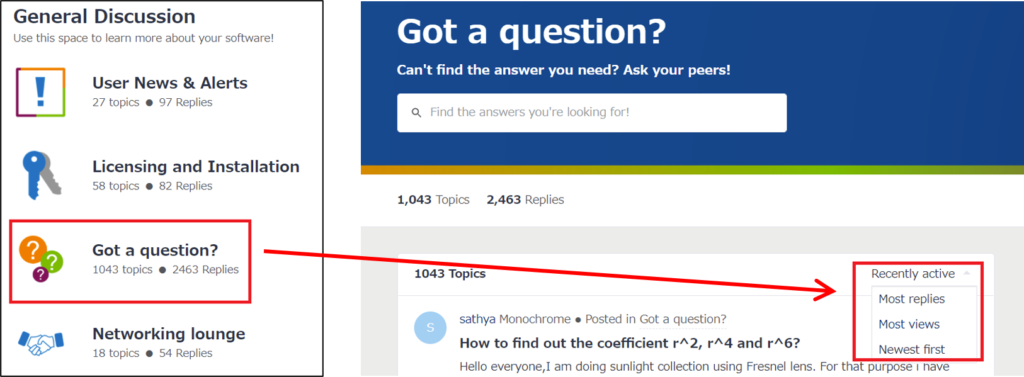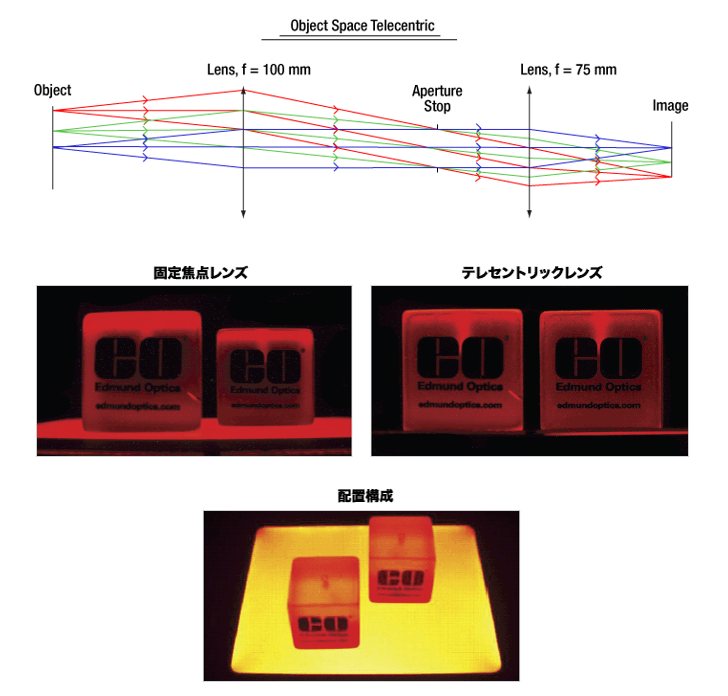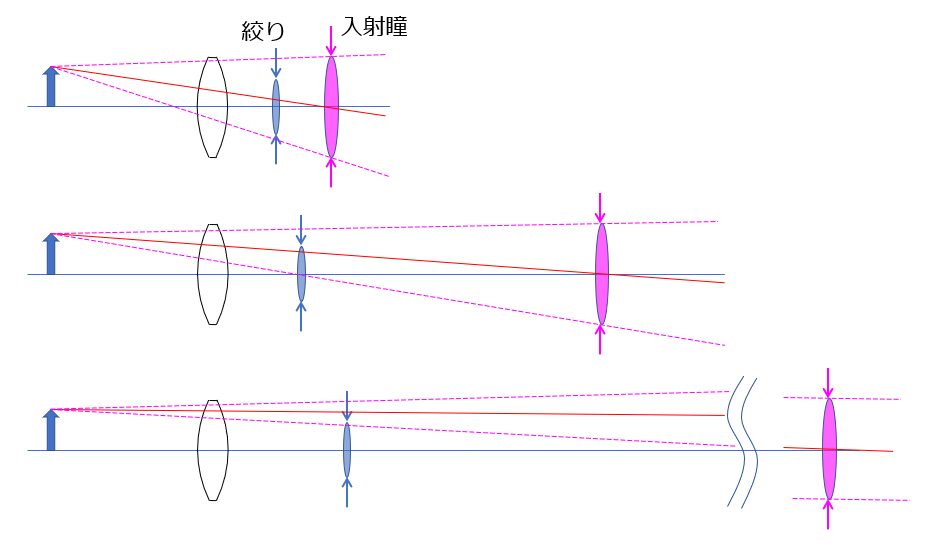Optical learning aims to be a light source that transmits various information under the theme of “optics”. The sources of information are public information on the Internet and some knowledge and experience of the author. This page describes “Telecentric Object Space” option in system explore, aperture tab.
Conclusion
- The object space telecentric optical system is an optical system in which the entrance pupil is at infinity, and the image space telecentric optical system is an optical system in which the exit pupil is at infinity. When both are satisfied, it is called bi-telecentric optical system.
- The Telecentric Object Space option ignores the actual entrance pupil position and forces the entrance pupil position to infinity to make the chief rays parallel to the optical axis.
- Turning the Telecentric Object Space option on is essentially unrelated to designing the object space telecentric optics, and the design must be designed so that the entrance pupil is at infinity.
What is Zemax community?
It’s like an communication site attached to the Zemax homepage, where users of Zemax products and Zemax employees can have free discussions. The link is here (https://community.zemax.com/).
From the top page of the community, go to General Discussion > Got a question ? There is a sort option in the upper right corner of the list of topics, so you can set it to Most views or Most replies to see the topics that are likely to be hot.

Telecentric in object space
Link to the post: https://community.zemax.com/got-a-question-7/telecentric-in-object-space-60
There are two questions. The first question is “How do I place the stop plane in the focal plane of an object space telecentric system?” and the second question is “When should I use the options Telecentric Object Space?”
Discussion in the post
The first question is a bit confusing for me. In response to this, Mr. Angel, an engineer at Zemax, replied “The position of the stop can be specified by the user.” and “To make the object space telecentric optical system, we need to set the entrance pupil to infinity away.” These replies explain important things.
The answer to the second question is, “If the field type is ‘Angle’, the option is grayed out and cannot be used, so please check.” and “Typically, this option is used to model light emitted from a display or fiber.” By the way, even when thickness of object plane is infinity, the telecentric object space option is available when the field type is paraxial/real image height. I have never tried or thought about object space telecentricity of infinite conjugates, but is it really possible? I will think about it a little more in the future.
Basic knowledge of object-side telecentric
You can get a lot of useful information from the internet about telecentric optical system. The following points would be important.
- Optical system that chief rays are parallel. The establishment condition is that either or both of the entrance pupil and the exit pupil are at infinity.
- Field angle is zero (when object-side telecentric). Therefore, even if the distance between the optical system and the object changes, the imaging size does not change.
- The system is often used in machine vision related applications.

How does OpticStudio sequential mode create rays?
Not only OpticStudio, optical software using sequetial ray tracing creates rays so that rays emitted from a point light source fill the entrance pupil. The entrance pupil is the image of the actual stop plane formed by the optics in front of the actual stop plane. The author understands that the entrance pupil is the “effective” entrance of the optical system. The chief ray is the ray that enters the center of the stop = entrance pupil from each field of view. Hikari learning will explain about stop, entrance/exit pupil.
Note: The chief ray is a very important ray, but it should be confirmed the definition of the chief ray since it differs depending on the software. The definition of chief ray becomes more confusing when optical system has ray vignetting. OpticStudio’s definition of chief ray is “the ray that passes through the center of the entrance pupil (when no vignetting in the system)”.
If the entrance pupil is at a finite position with respect to the object plane, the chief ray from the field point to the center of the pupil will be angled. In other words, there is an angle between the “chief ray from the optical axis” and the “chief ray from off-axis”. Please image that entrance pupil gradually moves away from the object plane, the angle becomes smaller. And if the entrance pupil goes to infinity, the angle is zero, that is, the chief rays are parallel.

Telecentric Object Space option
In the System Explorer in OpticStudio Sequential Mode there is an option called “Telecentric Object Space”. Enabling this option forces the chief rays to be parallel to the optical axis, regardless of where the system’s entrance pupil is.

The important fact is that even if this option is enabled, the system will NOT be object space telecentric. The requirement for object space telecentricity is that the entrance pupil is at infinity. Due to the name of the option, you might think that the option should be enabled when designing an object space telecentric optical system. But it’s not ture. Please recall Angel’s answer, “This function is used when modeling the light output from a display or fiber”.

When designing a telecentric optical system, the entrance pupil should be controlled to be at infinity. OpticStudio has an operand that returns the entrance pupil position (ENPP), so it can be optimized for an infinite entrance pupil position.
Summary
On this page, I picked up a Zemax community post about “object space telecentricity” and explained it along with related features in OpticStudio. Whether it is the object space or the image space, telecentric optical systems have many advantages, and demand for them, especially for industrial imaging systems, is expected to continue growing.


コメント